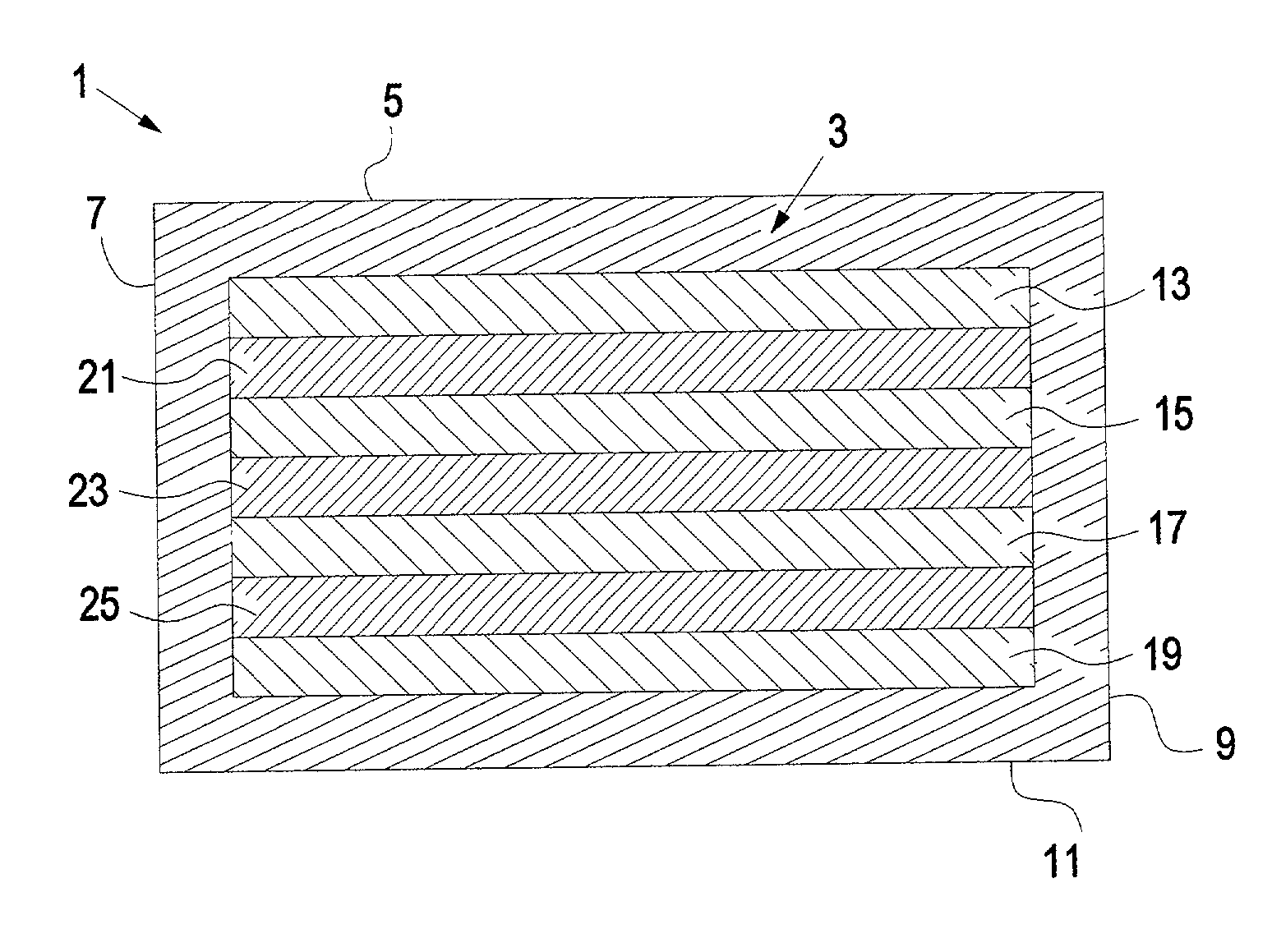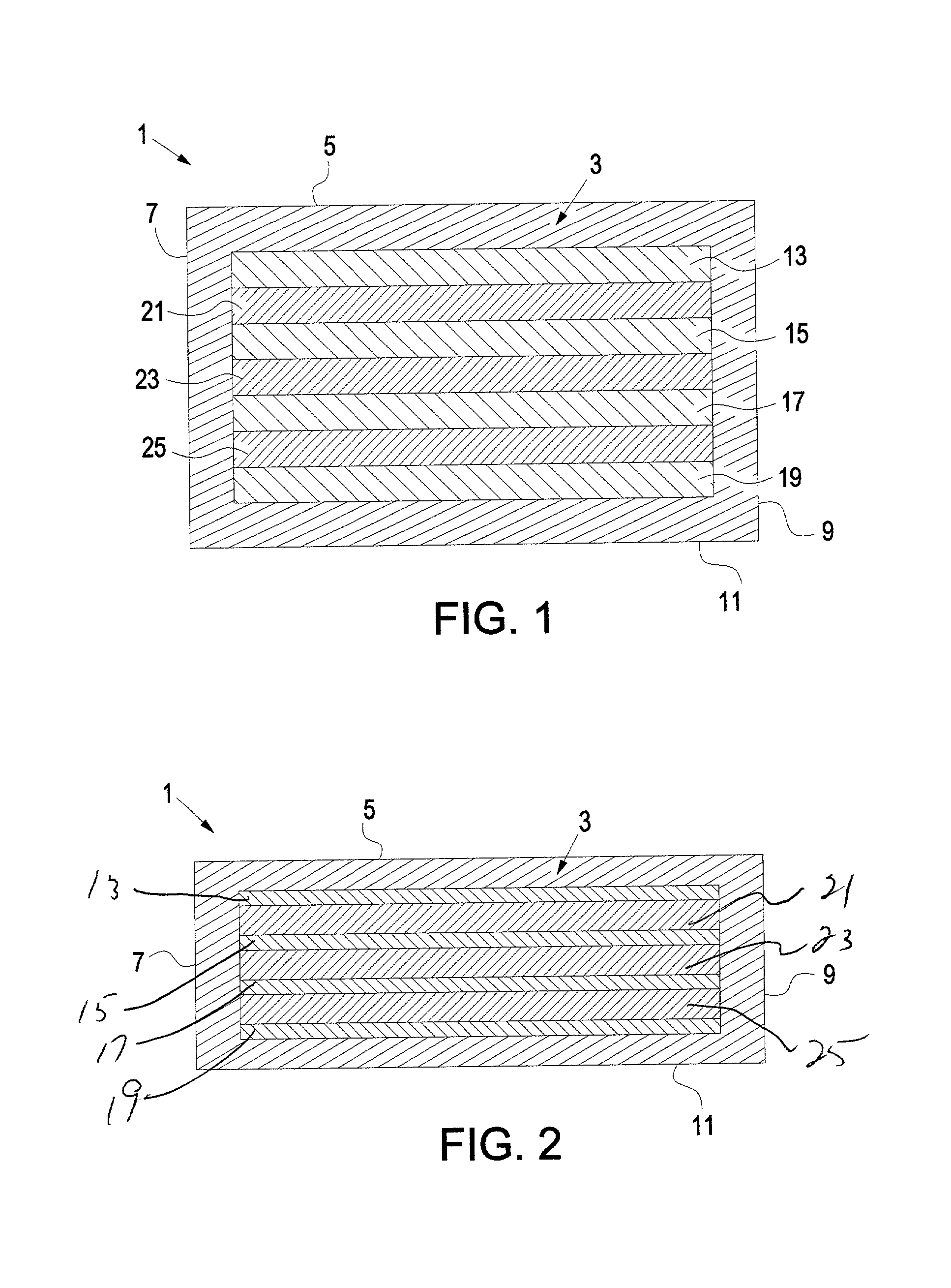Hydrogel-based prosthetic device for replaceing at least a part of the nucleus of a spinal disc
- Summary
- Abstract
- Description
- Claims
- Application Information
AI Technical Summary
Benefits of technology
Problems solved by technology
Method used
Image
Examples
example 1
[0058] A prototype of the NP prosthetic was prepared using an AQUACRYL type hydrogel.
[0059] AQUACRYL is a copolymer, prepared by a partial alkaline hydrolysis of polyacrylonitrile (PAN) in the presence of sodium thiocyanate (NaSCN). The resulting hydrolysis product is a multi-block acrylic copolymer, containing alternating hydrophilic and hydrophobic blocks. Hydrophilic blocks contain acrylic acid, acrylamidine, and acrylamide. The hydrophobic blocks are formed by the remaining sequences of unreacted acrylonitrile units. The composition of the hydrolysis product varies with the type of AQUACRYL material, and depends on reaction conditions and the conversion of the hydrolytic reaction. The composition and basic properties of the two standard types used in this example are as follows:
1 Copolymer composition (% mol) AQUACRYL 90 AQUACRYL 80 Acrylonitrile units 55 79 Acrylic acid units 30 14 Acrylamide units 9 4 Acryalmidine units 6 3
[0060] Essential Characteristics of the Coagulate
2 Equ...
example 2
[0099] The dehydrated and radiation sterilized elliptical disc from Example 1 is partially rehydrated using water vapor. Then it is heated up to 60.degree. C. and rolled under sterile conditions into a roll of about 7.5 mm in diameter, and chilled to a temperature of +4.degree. C. The rolled-up elliptical disc is then rinsed with aqueous ethanol for additional sterilization, dried off, and enclosed in sterile packaging. During implantation the rolled-up prosthesis is inserted through a channel into the intravertebral space and oriented appropriately, after which a sterile physiological solution at body temperature is injected into the space. Once heated up to body temperature, the prosthetic will unfurl from the rolled-up to a flat state. It will swell by absorbing water, and will expand in the axial direction relative to the spine. The speed of unfurling of the prosthetic and its subsequent expansion is controlled by the concentration of water in the hydrogel after its partial rehy...
example 3
[0100] The prosthetic can also be manufactured by using other materials than those described in examples 1 and 2. Elliptical profiles sized 30.times.17 mm are cut out of an open-cell polyurethane foam. One polyurethane foam type (A) is soft, yielding, with density of about 0.03 g.cm.sup.-3. The other foam type (B) is semi-rigid with a density of about 0.15 g.cm.sup.-3.
[0101] The profiles are saturated by an AQUACRYL 90 solution from Example 1, and then they are stacked in a B-A-B-A-B order, enclosed in an encapsulation form from Example 1, and further processed by coagulation, washing, dehydration, and sterilization as in Example 1.
[0102] The prosthetics described in this invention can be used in the medical industry.
PUM
| Property | Measurement | Unit |
|---|---|---|
| Percent by mass | aaaaa | aaaaa |
| Angle | aaaaa | aaaaa |
| Percent by mass | aaaaa | aaaaa |
Abstract
Description
Claims
Application Information
 Login to View More
Login to View More - R&D
- Intellectual Property
- Life Sciences
- Materials
- Tech Scout
- Unparalleled Data Quality
- Higher Quality Content
- 60% Fewer Hallucinations
Browse by: Latest US Patents, China's latest patents, Technical Efficacy Thesaurus, Application Domain, Technology Topic, Popular Technical Reports.
© 2025 PatSnap. All rights reserved.Legal|Privacy policy|Modern Slavery Act Transparency Statement|Sitemap|About US| Contact US: help@patsnap.com


